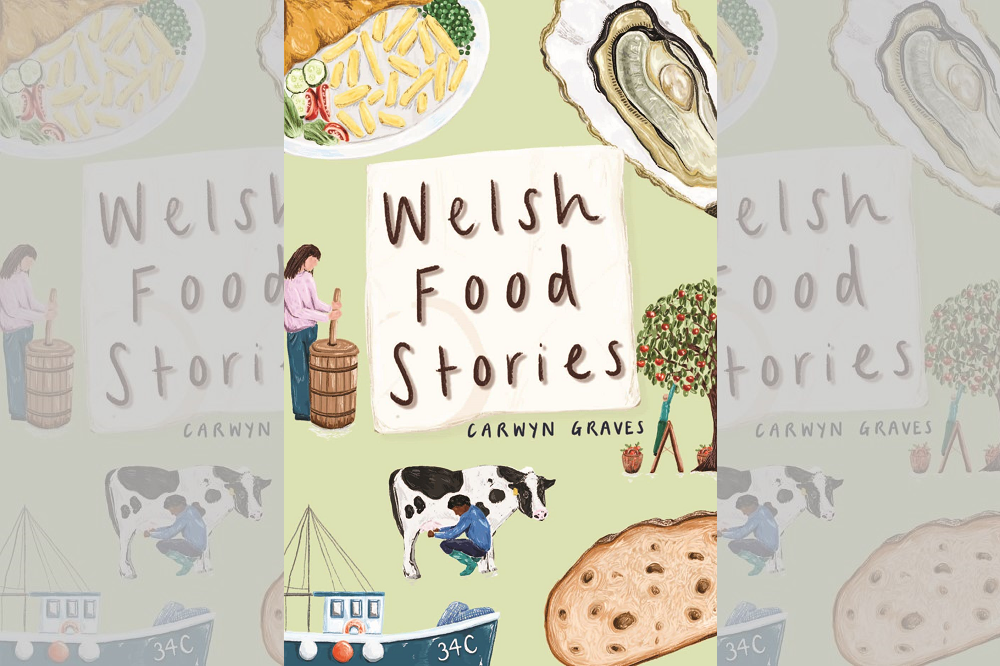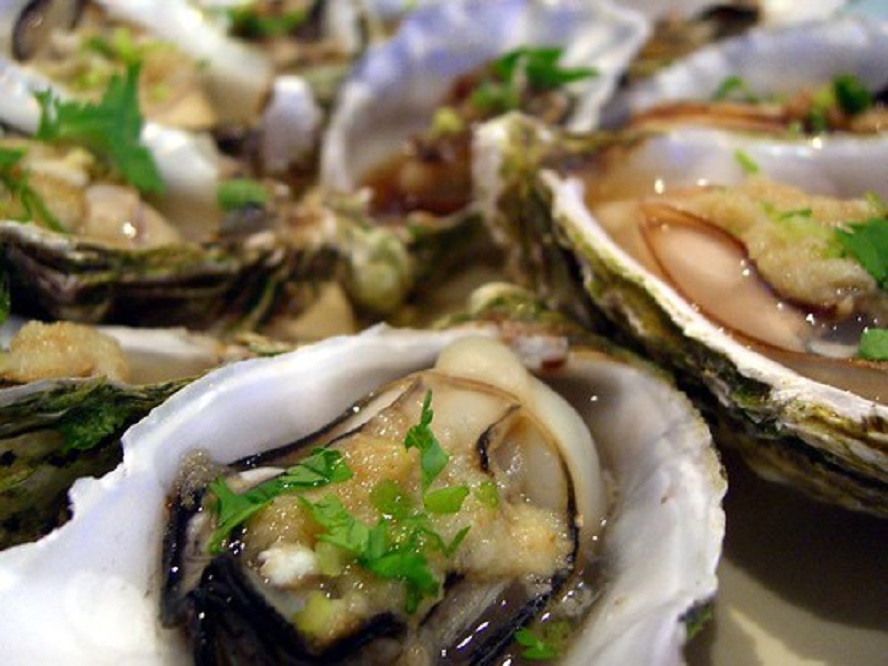Review: Welsh Food Stories by Carwyn Graves

Jon Gower
It’s no mean feat to write a book that has the heft of authority while at the same time is as readable as a cereal packet but Carwyn Graves has done so with aplomb.
Divided into nine chapters, this nine course feast of enquiry and celebration takes us through the history of Welsh food, giving us oodles of history and plenty of stories as he tells us about bread, cheese, laver, cockles and oysters, lamb and beef, salt, butter (and of course salted butter) chips, leeks and cider.
Graves has already given us a book about the last of these, which in part accounts for our having the most pretentious garden in west Cardiff, with Welsh apple types planted as they would be on the map of Wales, with Afal Enlli as the northermost planting, and so on.
But I digress, albeit juicily.
As he does with all the other foodstuffs Carwyn Graves includes, in each chapter a visit to an appropriate maker, in this case Alex Simmens of Llanblethian Orchards in the Vale of Glamorgan.
Here they have planted 36 different apple varieties such as Pen Caled, Breakwell’s and Pig Aderyn along with 16 perry pear varieties. And if you’re writing about food you have to sample or drink some of it.
In this case it’s Alex’s ‘Breakwell’ cider, even though Carwyn knows that it’s an old saw in the cider trade, if you pardon the pun, that few classic varieties are rounded enough to create convincing single-variety draughts:
So I am amazed, in the most pleasantly possible way, when I swill the first mouthful and discover the most honeyed, smooth and refreshing cider I have possibly ever tasted. I am drinking with my mother, and we both try to put our finger on the green apple flavour coming through, and then we’ve got it: of course, it’s apple crumble: fruit, light and gently sweet. The sort of flavour that takes you to the end of a long summer day’s harvesting – even if you’ve never done that sort of work yourself.
Much to savour
Graves visits a range of locations, meeting people such as Anne Evans and Pete Segger of Blaencamel who over the last 45 years have made this Ceredigion farm, with its poor soils ‘into one of the most productive patches of earth in the whole of Wales, by growing organic vegetables on a commercial scale in a place where everybody said they couldn’t.’
He visits a working water mill at Felin Ganol, also in Ceredigion to learn about Welsh grains and flour- making that in turn allows artisan bakers such as Andy of ‘Andy’s Bread’ in Llanidloes to bake loaves that are the very antithesis of the ‘Chorleywood’ method of mass production used in making modern supermarket bread, or what passes for bread.
Andy uses ‘Hen Gymro’ wheat in what is now the only bakery in a small town of 3,000 inhabitants that used to support three.
But, tasting a slice of Andy’s ‘Llani Wild’ sourdough, smeared with butter, this is ‘bara menyn’ as it should be,’ Graves opines whilst clearly licking his lips with pleasure.
There is much else to savour in these pages, not least some surprises.
One is the fact that oysters used to be very much the food of the poor, indeed a ready source of protein. In 1635 you could visit Carmarthen market and get no fewer than a hundred for a single penny.
In the boom period the bivalves were landed in the tens of millions by boats out of Oystermouth and Swansea.
Then there is the history of the short-lived but ambitious 17th century attempt to create salt pans in the Dyfi estuary, in part a response to tensions between England and France, at the time a principal salt exporter.

Food security
Welsh Food Stories chronicles a history of changing fashion and social change with food and foodstuffs at the very heart of things.
But this isn’t just about the past: Graves underlines the fact that ‘most of the best dishes are time-worn; most of the best food knows where it came from, what story it fits into and even what story it is a reaction against.
And so to base the food economy of the future on the foods of a faceless global market would be to do not just Wales but the entire world a disservice.’
In that sense the book is a sort of proposition for a better future, where farms can lock in carbon and food security – where production is challenged, say, by the climate emergency or an outbreak of war – is achieved by simply producing locally.
This could all be seen as pie-in-the-sky were it not for the many worked examples which flicker through it pages, showing how a little bit of vision, coupled with good taste and a respectful knowledge of the past, can not only keep local food production alive but also help safeguard biodiversity, the future of farming.
It’s a cracking volume but also an important one, shot with Graves’ infectious enthusiasm for a subject as delicious as a slice of Carmarthen ham or hunk of Golden Cenarth cheese.
Welsh Food Stories by Carwyn Graves is published by Calon and is available through all good bookshops or you can buy a copy here.
Support our Nation today
For the price of a cup of coffee a month you can help us create an independent, not-for-profit, national news service for the people of Wales, by the people of Wales.




